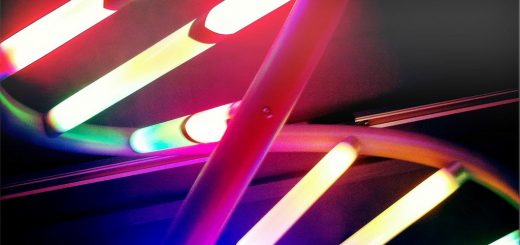The Acousticians Part 2 – Gunshots and Pink Noise
In the second of a two-part series, Alan Boyd looks at the development of acoustic measurement techniques.
A concert hall can be an accomplished piece of architectural design, yet leave many patrons a little underwhelmed after a performance. If you have that problem, if no one else can help, and if you can find them, maybe you can hire… The A-Team.
In The Acousticians Part 1, we learned about the beginnings of architectural acoustics and some acoustic theory. This article will focus on the techniques used in acoustic measurement. The most basic way to measure the acoustics of a space is to produce an impulsive (i.e. short), broadband (full frequency) noise in the room under test conditions and record the resultant reverberant decay. In short, you clap. At the end of the nineteenth century, the techniques available to Wallace L. Sabine (the father of architectural acoustics) were not much better than a hand-clap. The standard measurement technique up until the post-war era (when brand new concert hall designs such as the Royal Festival Hall in London were built) was to record the firing of a starter-gun or a balloon bursting for around one hundred repetitions. Averages for each of the recorded impulse points then had to be taken by hand 1. Not only was this incredibly laborious, it was also fairly inaccurate by modern standards, due to movement of the firer’s hand and variations in frequency response between shots. Some acousticians even went as far as employing a full orchestra to play stopped chords and recording the results. That’s one hundred musicians, playing the same chord and stopping, up to one hundred times. The good old days…
The advent of portable, digital equipment changed acoustic measurement in the 60s and 70s. Not only could the impulse responses be recorded, displayed and analyzed more easily, but the production and most importantly the accurate repetition of the input signals was improved by the introduction of MLS (Maximum Length Sequences) 2. MLS are pseudo-random binary bit sequences, generated using maximal linear feedback shift. Essentially this is a mathematically rigorous way of producing a noise similar to a mistuned analogue television. What this means for acoustic measurement is that one has an infinitely repeatable signal with the properties of pink (flat frequency) noise. However, if all we require is a short impulse response, why would we need this repeatable noise?
For the answer, we conduct a little manipulation with that panacea of almost all signal processing ills, the Fourier Transform (FT). The Fourier transform allows signals displayed in the time-domain to be represented in the frequency-domain. The recorded signal contains the original sound and the room response. By performing an FT on the input and recorded signals, the input signal (now represented in the frequency-domain) can be inverted and used to filter the recorded signal, leaving only the room response. Lastly the inverse FT, transforming from the frequency to the time-domain, is applied to give the impulse for the room.
MLS appears to give the perfect solution for measuring impulse responses, but there are several downsides. Sending a stream of ones and zeros to a physical system such as a loudspeaker can produce distortion, as the speaker attempts to reproduce a square wave and physically over or under-shoots. These distortions show up as an unwanted increased noise floor in the subsequent impulse response, requiring a louder test signal to produce the required 60 dB decay in the impulse, which in turn will only increase the distortion as the physical system is driven harder. One solution to this is to use several MLS sequences of the same length, generated by different recursive relations and average the result. The distortion artifacts will appear at different points in the signal for each sequence, thus an average will dampen or remove them completely. By running 5 sequences and averaging the middle 3 with the lowest distortion spikes, the noise floor will drop considerably. In addition, running the same sequence several times and taking an average will lower the effect of background noise in the room, but only to the level of the internal system noise. Small variances in the room response over time (doors closing, street noise) can also result in a poor measurement. Just so we’re clear then, you make quite a lot of noise for a long time to reduce the noise level in the noise you want to measure.
Unfortunately, building an MLS system in MATLAB (other programming languages are available) can be extremely unrewarding and highly dependent on hardware. Other methods such as time delay spectrometry (TDS) solve some of the issues of MLS while introducing others. To solve these issues, Angelo Farina and Sven Muller developed a faster and more robust technique called swept-sine in the early Noughties, utilizing the oddly pleasing sound of a sine wave rising in frequency 3.
Swept-sine uses exactly the same technique for extraction as MLS, inverting the FT of the original signal and filtering the recorded signal’s FT to produce an impulse response. However, it has several advantages.
Firstly, each point in the time-domain of the swept-sine signal represents one frequency, while the size of the frequency sweep can be varied. These features mean that the loudspeaker is far less likely to be overloaded, as it is not trying to punch out a full-frequency pink noise at all times. It also means that distortion artifacts, if they occur, will be pushed to the end of the extracted impulse by the inverse filter. The frequency range of the impulse can also be tuned to further reduce over-loading and keep the signal within its operating range.
Secondly, swept sine does not require the acoustics of the room to be in a steady state as the signal need only be a little longer than the expected reverberation time and no averaging is required (unless the room is very noisy, in which the annoyance caused to the audience and performers is probably a more pressing concern).
All public buildings and offices must be designed, built and tested to strict guidelines, from noise level readings and soundproofing, to concert halls whose acoustics qualities can be varied depending on what type of music is being played. The techniques above have helped improve the design of many of the rooms you use every day.
In nearly 120 years, the study of acoustics has gone from an untouchable problem for failed physicists to an active area of research for architects and engineers (and a few failed physicists…).
References
- P. H. Parkin, W. A. Allen, H. J. purkis, and W. E. Scholes. The acoustics of the royal festival hall, london. Journal of the Acoustic Society of America. 1953
- M. R. Schroeder. Integrated-impulse method measuring sound decay without using impulses. Journal of the Acoustic Society of America, 1979
- Farina, A. 2000. Simultaneous Measurement of Impulse Response and Distortion with a Swept-Sine Technique. Audio Engineering Society Convention 108











I enjoy posts that match in your knowledge gaps.
This one is of the sort. Moreover, I enjoy how the writer organized his thoughts
as well as the visual component.